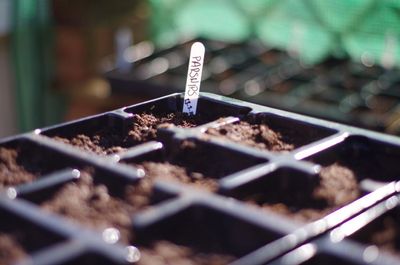When to Plant Parsnip Seeds
Plant parsnips seeds as soon as the ground is workable in spring, but not until the soil has warmed to 40 degrees F. (4 C.). Parsnips don’t germinate well if the soil is too cold or if air temperatures are below 75 degrees F. (24 C.).
How to Grow Parsnips from Seed
When it comes to growing parsnips from seed, proper soil preparation is critical. Work the soil well to a depth of at least 18 inches (46 cm.), then rake out rocks, clods, and clumps. To keep the soil loose and friable, dig in a generous amount of compost or other organic material. This step is especially important if the soil in your garden is compacted, as parsnips may develop crooked, branched, or distorted roots in hard soil. Additionally, dig a balanced, general-purpose fertilizer into the top 6 inches (15 cm.) of soil at planting time, according to label recommendations. Once you’ve prepared the soil, plant the seeds on the surface, then cover them with no more than ½ inch (1 cm.) of vermiculite, compost, or sand to help prevent crusting. Allow 18 inches (46 cm.) between each row. Be sure to start with fresh seed, as parsnips seeds lose viability quickly. Consider pelleted seeds, which simplify planting the tiny seeds.
Caring for Seed-Grown Parsnips
Water as needed to keep the soil uniformly moist. Parsnips are relatively slow to germinate, usually taking two to three weeks, or even longer if the soil is cold. Thin the plants to a spacing of 3 to 4 inches (8-10 cm.) when the seedlings are well established – usually about five or six weeks. Avoid pulling the extra seedlings. Instead, use scissors to snip them at soil level to avoid damaging the roots of the “good” seedlings. Pile soil around the parsnips when the shoulders appear. This step will protect the vegetables from greening from exposure to sun. As a general rule, parsnips need about 1 to 2 inches (2.5-5 cm.) of water per week, depending on temperature and soil type. Reduce watering as harvest nears. A layer of mulch keeps the soil moist and cool as temperatures begin to rise. Feed the plants about six weeks after sprouting, and again a month later using a light application of a nitrogen-based fertilizer (21-0-0). Water thoroughly.
